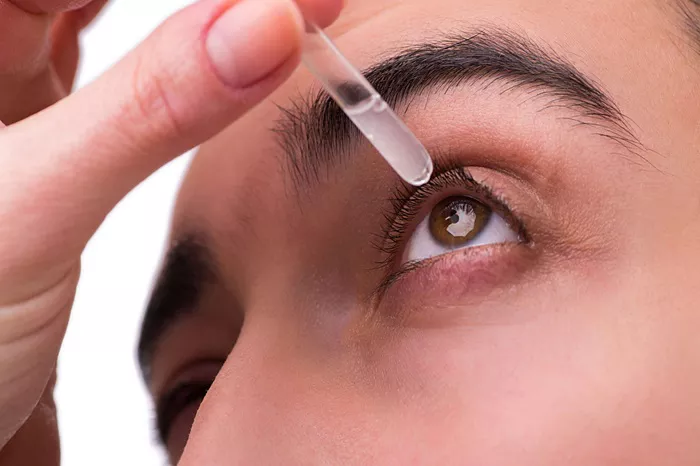Seasonal allergic conjunctivitis (SAC) is a common ocular condition that affects millions of individuals worldwide. It is characterized by an inflammatory response in the eyes, triggered by allergens in the environment such as pollen. This condition is most prevalent during certain times of the year, particularly in spring and early summer when pollen counts are at their highest. This article provides a comprehensive overview of SAC, exploring its etiology, symptomatology, diagnostic procedures, and effective management strategies to mitigate discomfort and improve quality of life for sufferers.
Defining Seasonal Allergic Conjunctivitis
The Immunological Basis of SAC
Seasonal allergic conjunctivitis is classified under the broader category of allergic conjunctivitis, which also includes perennial allergic conjunctivitis (PAC), atopic keratoconjunctivitis (AKC), and vernal keratoconjunctivitis (VKC). SAC is specifically triggered by seasonal environmental allergens and is mediated by an immune response involving immunoglobulin E (IgE) antibodies. Upon exposure to specific allergens, these antibodies stimulate mast cells in the conjunctiva to release histamines and other inflammatory mediators, leading to the symptoms associated with SAC.
Common Allergens Triggering SAC
The primary allergens responsible for triggering SAC are tree, grass, and weed pollens. The prevalence and intensity of SAC symptoms can vary significantly depending on geographic location, weather conditions, and the specific types of vegetation prevalent in the area.
Symptoms of Seasonal Allergic Conjunctivitis
Characterizing the Symptoms
The hallmark symptoms of SAC include:
Itchy eyes: Often considered the most distressing symptom.
Redness: Due to dilation of conjunctival blood vessels.
Watery discharge: Typically clear and watery, distinguishing it from the thicker discharges associated with bacterial infections.
Swelling of the eyelids: Can occur in more severe cases.
These symptoms are typically bilateral and can significantly impact an individual’s daily activities and quality of life.
Diagnosing Seasonal Allergic Conjunctivitis
Clinical Examination and Patient History
Diagnosis primarily involves a detailed medical history and a thorough eye examination by a healthcare professional. Key diagnostic elements include:
Patient history: Including onset of symptoms, duration, seasonal variations, and response to previous treatments.
Physical examination: Focusing on the external appearance of the eyes and eyelids, as well as the conjunctiva and cornea.
Allergy Testing
While the diagnosis of SAC is often clinical, allergy tests may be conducted to identify specific allergens, aiding in both confirmation of the diagnosis and the formulation of avoidance strategies. These tests might include skin prick tests or specific IgE blood tests.
Management and Treatment of SAC
Pharmacological Interventions
The management of SAC typically involves:
Antihistamines: Either oral or topical, these are the first line of treatment for reducing itching and redness.
Mast cell stabilizers: These prevent the release of histamine from mast cells and are best used as a preventative measure before the onset of the season.
Nonsteroidal anti-inflammatory drugs (NSAIDs): Topical NSAIDs can be used to alleviate inflammation and discomfort.
Corticosteroids: These are used sparingly and only in more severe cases due to potential side effects.
Non-Pharmacological Strategies
In addition to medications, managing SAC involves several non-pharmacological strategies:
Avoidance of allergens: Strategies include staying indoors on high pollen days, using air filters, and keeping windows closed during high pollen seasons.
Cold compresses: Applying these to the eyes can provide immediate relief from itching and swelling.
Lifestyle Modifications and Home Remedies
Frequent eye rinsing: Using saline to flush out allergens.
Wearing sunglasses outdoors: Helps reduce the amount of pollen entering the eyes.
Optimal indoor humidity: Keeping indoor environments clean and humidity-controlled to minimize pollen exposure.
Advancements in Treatment and Future Directions
Emerging Therapies
Recent advances in the treatment of SAC include the development of more specific antihistamines with fewer side effects and the use of immunotherapy, which involves the gradual introduction of allergens to desensitize the immune system.
Research Trends
Ongoing research is focused on understanding the molecular pathways involved in allergic reactions, which could lead to more targeted and effective treatments in the future.
Conclusion
Seasonal allergic conjunctivitis is a significant health concern that can disrupt daily activities and diminish the quality of life. A comprehensive understanding of its causes, symptoms, and treatment options is crucial for effective management. By combining pharmacological treatments with practical lifestyle adjustments, individuals suffering from SAC can hope to achieve significant relief from symptoms and an improved overall quality of life. As research progresses, the future may hold even more promising treatments that offer better relief with fewer side effects, further enhancing the management of this seasonal affliction.
[inline_related_posts title=”You Might Be Interested In” title_align=”left” style=”list” number=”6″ align=”none” ids=”7826,7777,7773″ by=”categories” orderby=”rand” order=”DESC” hide_thumb=”no” thumb_right=”no” views=”no” date=”yes” grid_columns=”2″ post_type=”” tax=””]

































